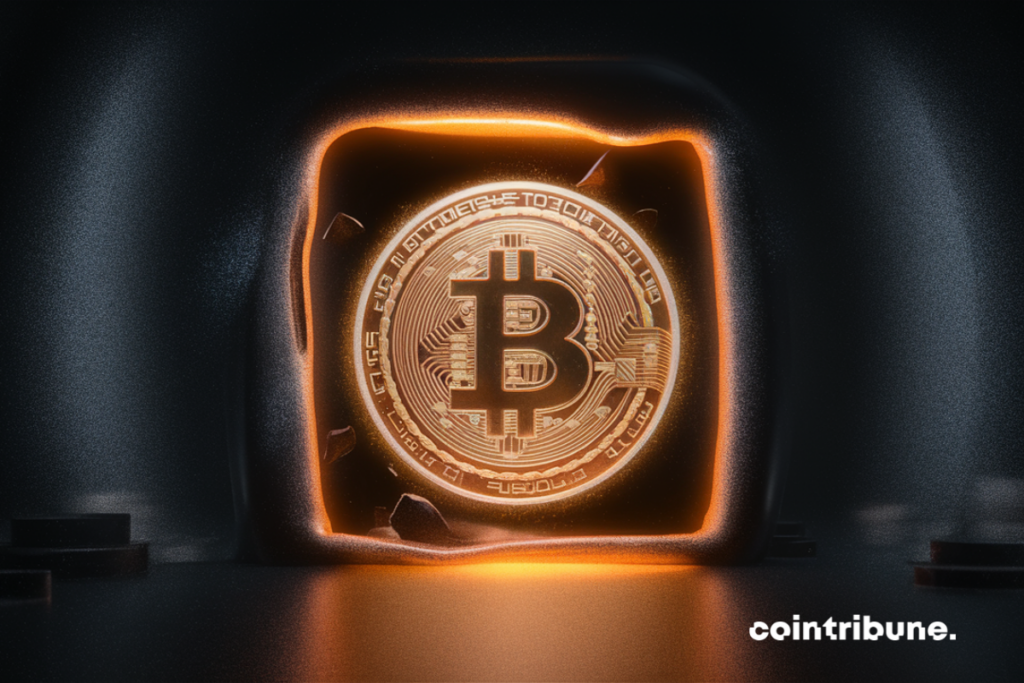26 hours to get to Feb 2023.
— Mechanic #FixTheFilters (@GrassFedBitcoin) May 10, 2024
Another ~55 hours and I'm still not synced.
Last year's explosion of UTXOs made IBD a pain in the ass. pic.twitter.com/DhJU5K4evR
A
A
Bitcoin Core breaks silence
Sun 12 May 2024 ▪
6
min read ▪ by
Getting informed
▪
Summarize this article with:
No consensus has yet been reached on the issue of “inscriptions.” Meanwhile, Bitcoin’s decentralization is dwindling day by day.

What’s the problem?
We recently reported that Bitcoin Core developers are under scrutiny. One of them spoke up on Peter McCormack’s podcast What Bitcoin did.
But first, let’s recap what we’re talking about. Inscriptions are arbitrary data foreign to the bitcoin protocol. The most well-known are “ordinals”. They are image files (Jpeg) that squat inside transaction scripts.
The concept is based on the “ordinals theory.” It is a convention also foreign to the protocol that maps the ordinals through a virtual numbering of satoshis.
These inscriptions are widely criticized and often described as scams that ruin the network’s decentralization. Therefore, they must also be considered an attack.
There are ordinals which have the harmful consequence of bloating the blockchain. And also the more toxic inscriptions called “STAMPS”, masquerading as public keys, which generate phenomenal amounts of utxo.
[Utxos are small pieces of code that mathematically link your bitcoins to your BTC addresses (your public keys)]
The number of utxo has more than doubled in just one year ! There are now 180 million utxos, which is about 10 GB. And this has greatly elongated the time required for the Initial Blockchain Download (IBD).
Bitcoin IBD
Inscriptions significantly extend the time needed to install a node. This is clearly evident from the tests recently conducted by @GrassFedBitcoin:
“It took me 26 hours to download the entire blockchain up to February 2023, and an additional 55 hours for the last year alone. The recent surge in the number of utxos made IBD a pain in the ass”, says the founder of the Ocean pool.
“The situation is far worse than before. We’re talking about several orders of magnitude. This is not FUD. The more we turn a blind eye [to the inscriptions], the faster we accelerate the centralization of the bitcoin network. At this rate, we will add more than 48 hours of IBD time every year.”
Put another way, it will take 24 days to set up a node in just a decade. And that’s even taking into account the fact that the power of the Raspberry Pi has recently doubled.
[The Raspberry Pi is a nano-sized computer about the size of a large pack of cigarettes that allows you to install the Bitcoin Core software and participate in the decentralization of bitcoin]
“In 2022, I could complete the IBD in less than 48 hours with a simple Raspberry Pi 4. I’m now using a Raspberry Pi 5 whose processor is twice as powerful. The Pi 5 can reduce the processing time of the same amount of data by 50%. And despite this, the IBD has taken over 82 hours instead of 48!”.
These figures are alarming. Do we really want to extend the time to set up a node to several weeks? Not to mention countries where internet connectivity is far from Western standards.
What is Bitcoin Core doing?
The question of inscriptions was, of course, posed to Gloria Zhao, one of the five developers whose PGP key allows to publish Bitcoin Core updates on Github (twice a year). She is the least experienced of the big 5, having joined a little less than two years ago. Her salary is paid by the exchange OKCoin (about 150,000 dollars were allocated to her through Brink).
Gloria Zhao emphasized throughout her interview that there is “nothing she can do that is not completely public. I recognize that I have a lot of privileges on Github, but there is nothing we can do that isn’t fully verifiable”, she insisted.
Sure, but not submitting code is just as consequential as submitting malicious code. And this is where the contention lies. Many are calling for an update of the filters to stem the flow of inscriptions. Among them is Luke Dash, the second-highest contributor to Bitcoin Core.
Filters are the shorthand for the rules that prevent certain transactions from being relayed to a miner’s node so he can add them to a block. The “dust limit” is one of them. This rule blocks transactions whose amount is lower than their transaction fees.
The code allowing to filter transactions carrying toxic inscriptions already exists, but the big 5 remains passive. One of the few excuses offered by Gloria Zhao is that nothing should be done against the financial incentives of miners.
This argument hardly holds up if the network’s decentralization is at stake. What will happen to bitcoin once it’s centralized? Financial incentive should not cause ideological blindness. We need to be rational.
We now await the other four core devs to take the floor as well. If the arguments are not convincing, it will be necessary to start asking questions. For example, about the revenues that an exchange like OKcoin collects on inscriptions…
Maximize your Cointribune experience with our "Read to Earn" program! For every article you read, earn points and access exclusive rewards. Sign up now and start earning benefits.
A
A
Bitcoin, geopolitical, economic and energy journalist.
DISCLAIMER
The views, thoughts, and opinions expressed in this article belong solely to the author, and should not be taken as investment advice. Do your own research before taking any investment decisions.